Forgotten Temples of Kashmir
Photo series Part-13 An effort to preserve and record Hindu cultural and religios heritage of Kashmir Village Loduv...Abode of Jeewan Sahib 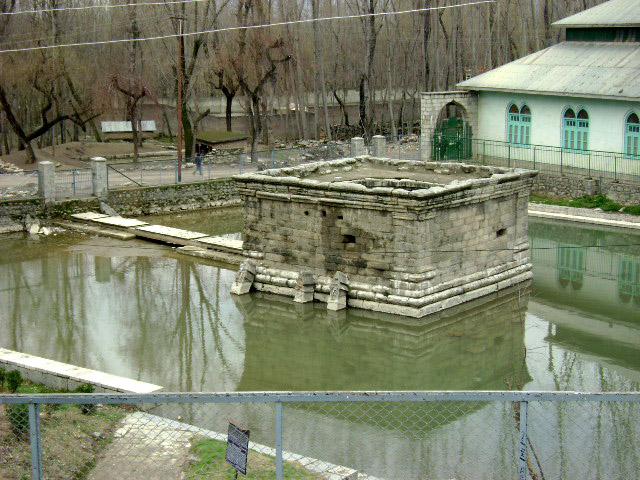
Exclusive images and report from a remote village in Kashmir provided for Shehjarby Chander M. Bhat |
| About two miles further east one reaches the village Khruv, the ancient Khaduvi that, as we have seen, gave to the district its former name. There is abundance of fine springs in and about Khruv: Abul-i-Fazl mentioned them as objects of worship and estimates their number as 360. Above the village a so-called ‘Svayambhu-Chakra’ or mystical diagram is shown on a rock. It is held sacred to Jwalamukhi-Durga and largely visited by pilgrims especially the Pandits. The temple is situated on the top of a small hillock. The Jwalaji festival falls on or about 16th July every year. This shrine forms the Isht Devi of maximum Pandits of the valley. Only a mile to the north of village Loduv is the village of Saar, until recently the seat of a flourishing iron-industry. Kalhana mentioned it by the name of Sanara as an Agrahara founded by King Sacinara. The Ziarat of Khwavu Khizar, which stands here near several small springs. Wahab Khar was born in 19th century at Saar. A blacksmith by profession he was also a Sufi saint. Wahab Khar has projected “mysticism” in his poetry. His “Sheikh Sana”, “Mash Tulur” and “Mehraj Name” are considered his best poetic creations. Wahab Khar Passed away in 1912. To the south of village Loduv, on the bank of the Vitasta lies the village of Latpor. An old gloss of the Rajtarangini identifies it with Lalitapura, a place founded in honour of King Lalitaditya by his architect. The king, according to the Chronicle, was not pleased with the attention; in any case no importance seems to have attached to the place. There are no old remains above ground, but the local tradition still knows of King ‘Laltadit’ as the founder of a large town on the neighbouring Udar. Some I km to the west of village Loduv is village Sempor. Some sources place this village as the birth place of great woman saint of Kashmir, Lal Ded in the year 1335 A.D. According to Guldastai Kashmir by Harpogal Koul, Loduv Pandit, a minister of Raja Saka during 2409-72 KE founded Loduv village. Loduv Pandit also built a temple there. Total area of the village is 904.87 hectares and as per 19781 Census total population of this village was 2820 souls comprising of 369 households. Kashmiri Pandit community comprises 24 percent of total population of the village and was having about 57 households. Eight households have held back after the mass exodus of Kashmiri Pandits from the valley in the year 1990. I visited the village on 7th March 2010; one Shri Ravi Ji Bhat son of Shri Nath Ji Bhat aged 43 of the same village accompanied me. M.A.Stein writes in Kalhana’s Rajtarangini, “The Pargana, which adjoins Srinagar from the southeast, in olden days, was known as Vihi. It extends from near Puranadhisthana to the Vastur Van spur near Vountpur (Awantipora) and comprises a wide semicircular tract of fertile karewa lands. In ancient times the district took its name from the village of Khaduvi, the present Khrew”. Loduv is known for two ancient temples…a bigger one and a smaller one. The bigger temple is in the middle of a shallow tank, which receives water from a spring in its North-East corner. The temple simple in design, 24 feet square externally, supports a domical ceiling. According to Pandit Ram Chand Kak “Externally the walls are without decoration, their bareness being only partially relieved by a cornice which consists of three courses of stone adorned with projecting fillets. The corner pilasters are quite plain, and headed by a semicircular, almost horseshoe-shaped, arch surmounted by a single storied pediment of very slight projection. Internally the temple is circular with a diameter of 17 feet and 6 inches. The smaller temple is similar to the bigger one. Internally the temple is 6 feet square and the ceiling consists of three courses of over lapping stones. Inside the spring is a Shiva Linga made of lime stone”. According to Pandit Kak, “A few yards behind this temple, higher up the hill and immediately at the back of the mosque, a smaller temple which externally presents the same appearance as the large temple, the only difference being that the projecting pediment which enclosed the round-headed doorway has here developed into a well-defined portico with a trefoil niche”. According to “Soon Adab” published by Jammu and Kashmir Academy, 1977, the material of the smaller temple has been used to build a Ziarat. At present there is no Shiva Linga in the spring. This temple has been taken over by the Archeological Survey of India and is being looked after by an employee of the same department. There are two more Shiva Temples in the village built by the Pandits of the village in recent past. These temples have been built on the shades of mighty Chinars. Village deity Raza Sahib called Tcharas Raza also lives near one of the temples. Gousein Naar forms the part of village Loduv, situated some half km from the main village. Ten Kashmiri Pandit families [nicknamed Gousein] were residing in this mohalla of the village. All the ten families migrated out of Kashmir in the year 1990. Jeewan Sahib passed his last days of his life in a house at Gousein Naar. Jeewan Sahib, an outstanding saint of the 18th century was born in Motiyar Mohalla of Rainawari. He was a highly evolved saint with tremendous spiritual powers. It is said that this great saint shifted from Rainawari to Gousein Naar in the 1779 and practiced sadhana in this village. All time Dooni was on during his life time and it continued for some years after he attained Mahasamadhi. The then Maharaja of Kashmir allotted him a jaggir of 80 kanals of land at Gousein Naar. Ten Kashmiri Pandit families were residing in this mohalla of the village, who were brought there from Srinagar by the then Maharaja of Kashmir to look after the land gifted to Jeewan Sahib. All these things are there but the people whose presence once thrived on the face of Loduv are now few and far between. Notes and References: 1. Place Names in Kashmir by B.K.Raina & S.L.Sadhu, published by Bharatiya Vidya Bhavan, Mumbai & Indira Gandhi National Centre for Arts, New Delhi, 2000. 2. Encyclopedia: Kashmiri Pandit: Culture & Heritage by C.L.Kaul, published by Ansh Publications, 2009. 3. Swami Jeewan Shah by Anjali Kaul, Austin. 4. Ancient Monuments of Kashmir by Ram Chand Kak, published by Aryan Books International, New Delhi, 2000. 5. Soon Adab…Kashir (Folklore) published by Jammu & Kashmir Academy, 1977. 6. Kalhan’s Rajatarangini….A Chronicle of the Kings of Kashmir, Vol: II by Stein, Aurel, published by Motilal Banarasi Dass, 1979. |

Close view of the ancient temple |
| Icons in open in the premises of Shiv Temple at Bona Aangan |
| Icon of Shiva in the temple at Batapora..JPG |
| Icons in open in the premises of Shiv Temple |
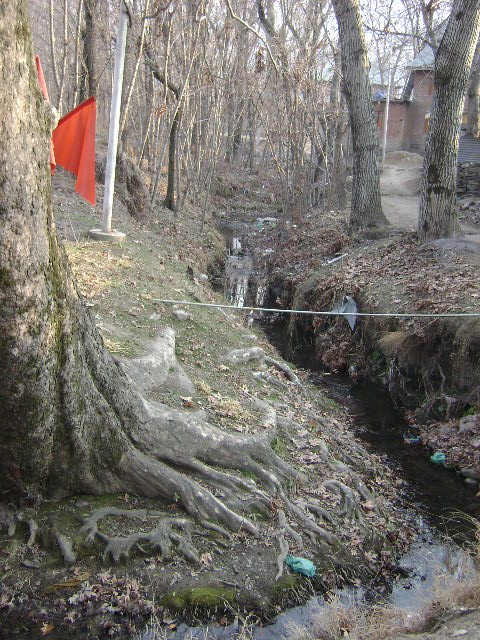
Razabal, Tcharas Raza |
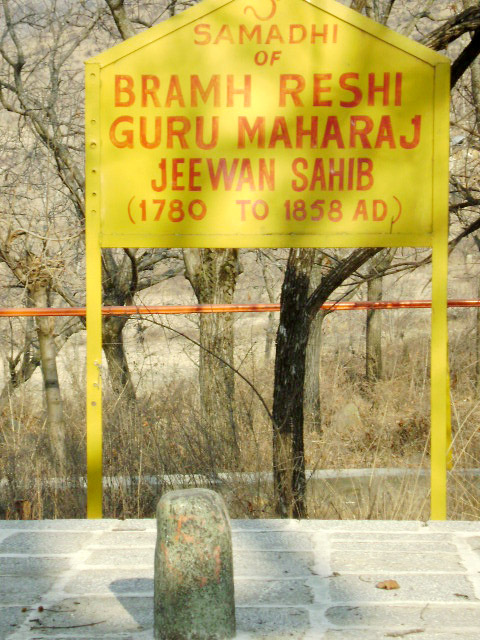
Close up of Samadhi |
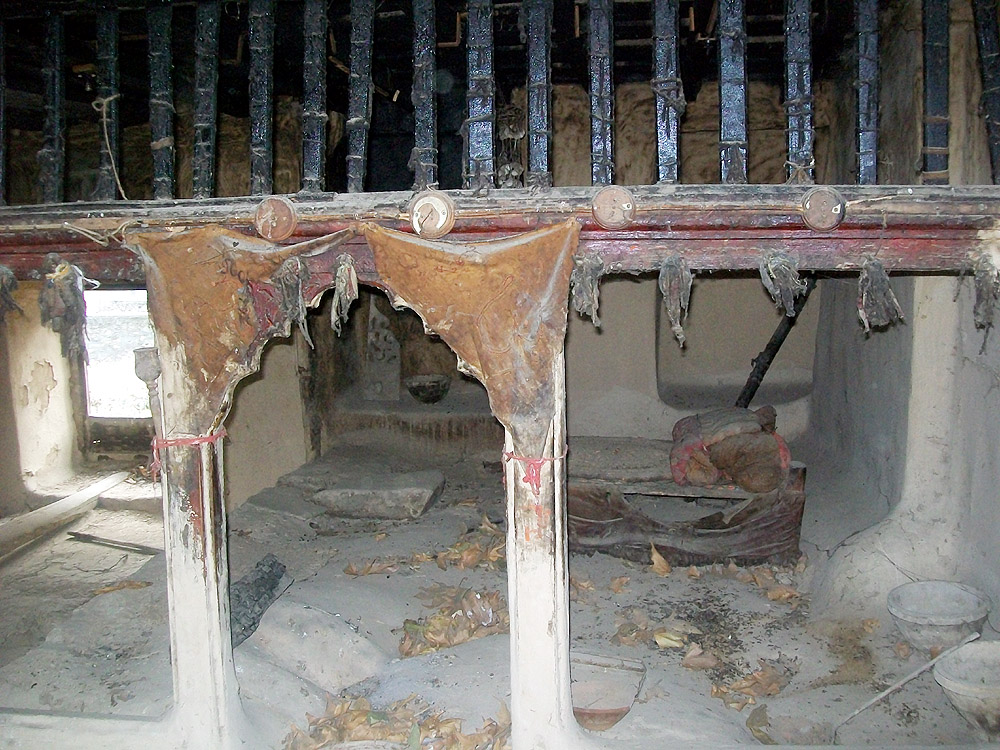
aAasana of Jeewan Sahib. Dhoni in front. |

'Dashi' still there |
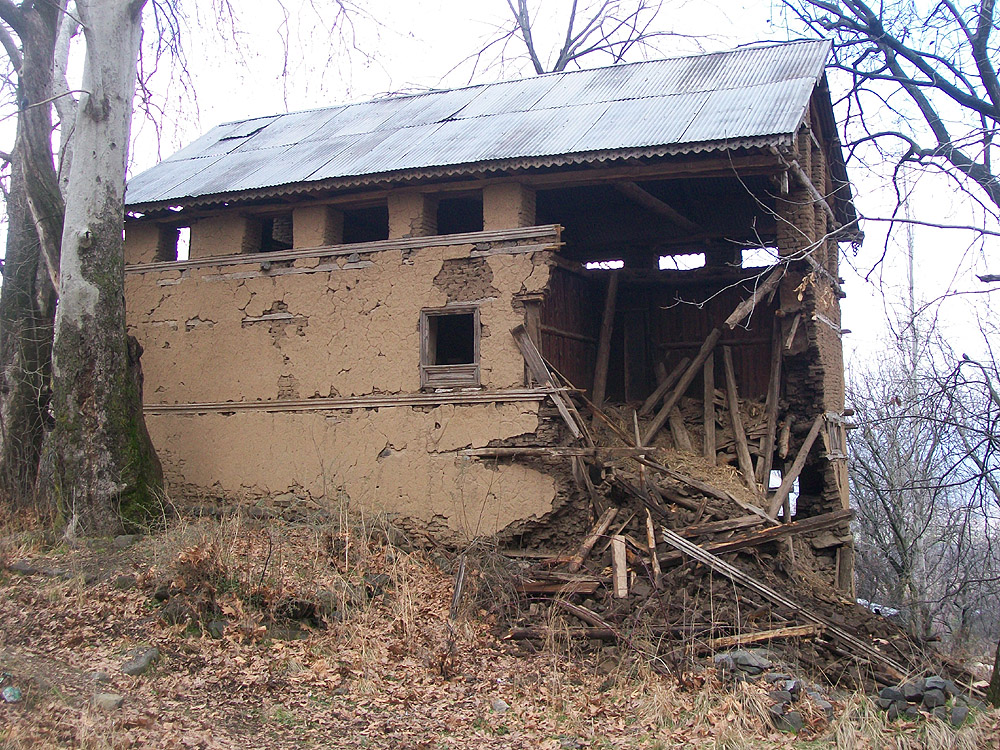 House at Gousein Naar where Jeewan Sahib practised sadhana
House at Gousein Naar where Jeewan Sahib practised sadhana |
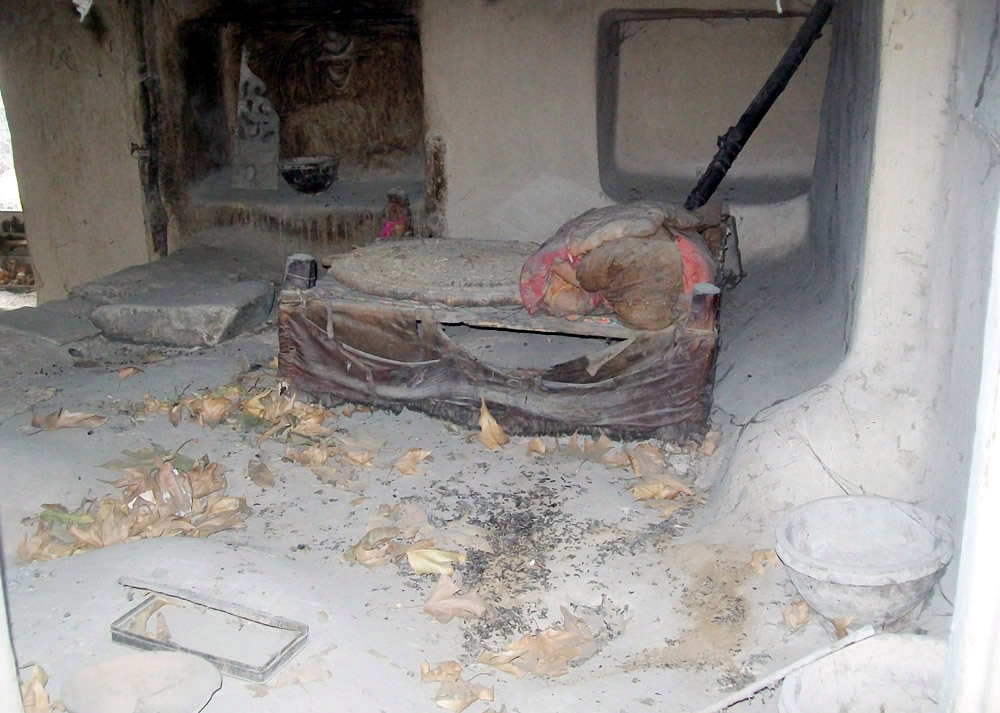
Thakhta [wooden plateform] on which Jeewan Sahib used to sit |

Close up of Thakta |

Holy Dhoni |
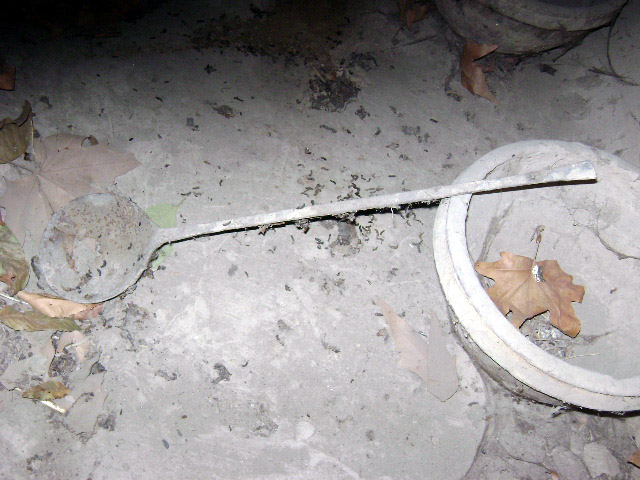
Big Spoon for Dhoni still in the house |
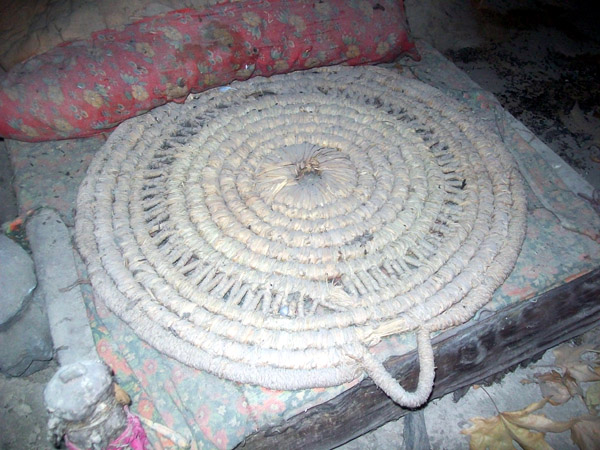
Bchagiz [grass aasana] used by Jeewan Sahib |
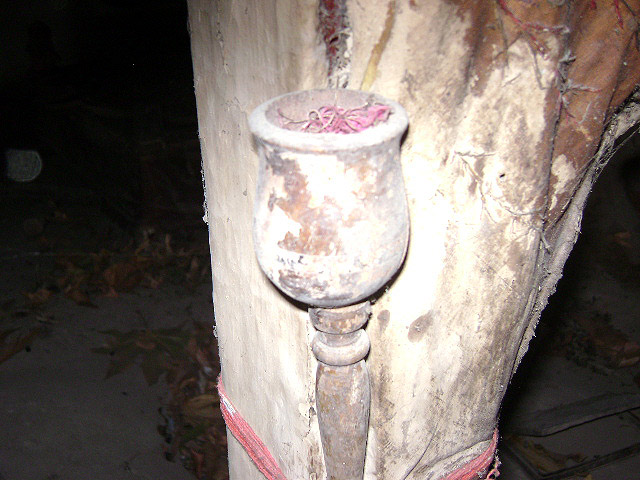
Earthen Chilim of Jeewan Sahib |
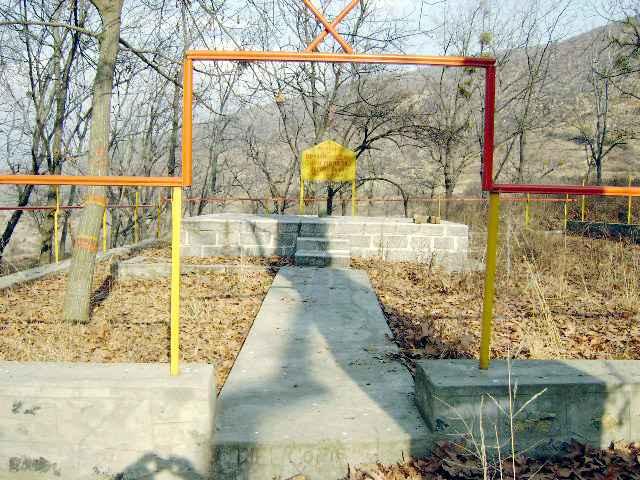
Samadhi of Jeewan Sahib constructed recently by State Govt. |
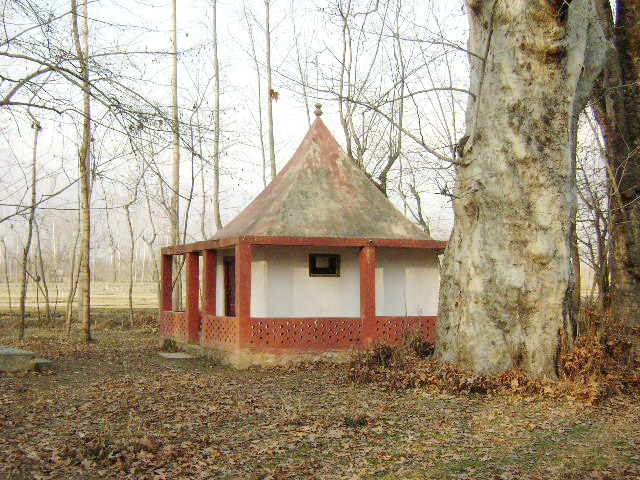
Another Shiv Temple in the premises |
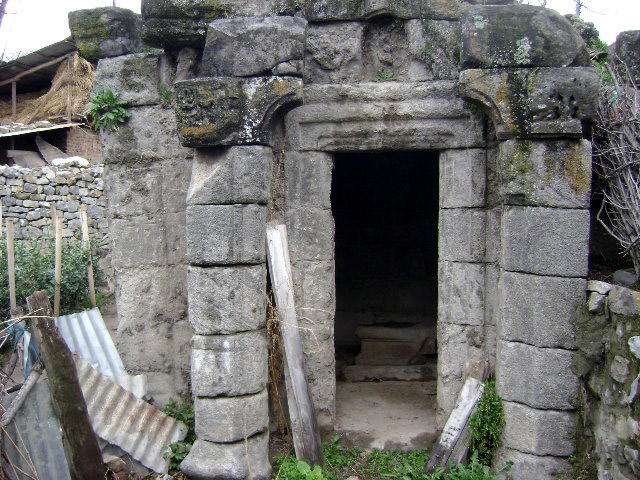
Smaller temple. Now inside the premises of a local house |
| |
| |
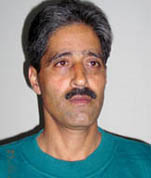 *Born on 20th March, 1960 in Murran a village in North Kashmir,
Chander M. Bhat is presently working as an Assistant Supdt. Posts, in
Department of Posts, Govt. of India. His articles regarding Posts and of
non-political nature stand widely published in various papers and
magazines of the country. A booklet 'How to Collect Stamps" published by
the Department of Posts, has earned him genuine accolades. He worked on
the project of tracing the roots of his co-villagers and of the village
Murran, resulting into the culmination of a widely acclaimed book
"Murran -My Village". Man with depth, Chander M. Bhat has also another
book, "Ocean by Drops" (collection of poems) in his vase having colorful
poems. His book "Ancient History of Jammu and Kashmir", confirms his
researching capability. Various research papers like "The Splendor that
is Amarnath" and "Vitasta" The Sacred River of Kashmir" are valuable
additions to his works that has proved very fruitful and guiding force
in the exile period of Kashmiri Pandits community of which the author is
also a member.
*Born on 20th March, 1960 in Murran a village in North Kashmir,
Chander M. Bhat is presently working as an Assistant Supdt. Posts, in
Department of Posts, Govt. of India. His articles regarding Posts and of
non-political nature stand widely published in various papers and
magazines of the country. A booklet 'How to Collect Stamps" published by
the Department of Posts, has earned him genuine accolades. He worked on
the project of tracing the roots of his co-villagers and of the village
Murran, resulting into the culmination of a widely acclaimed book
"Murran -My Village". Man with depth, Chander M. Bhat has also another
book, "Ocean by Drops" (collection of poems) in his vase having colorful
poems. His book "Ancient History of Jammu and Kashmir", confirms his
researching capability. Various research papers like "The Splendor that
is Amarnath" and "Vitasta" The Sacred River of Kashmir" are valuable
additions to his works that has proved very fruitful and guiding force
in the exile period of Kashmiri Pandits community of which the author is
also a member.Presently the author is working on "OOL - THE NEST" a six volume project on all the 595 (each volume of about 2500 pages)Kashmiri Pandit villages of Kashmir POSTED BY : VIPUL KOUL EDITED BY : ASHOK KOUL BY........ |
Monday, June 4, 2012
Forgotten Temples of Kashmir
Subscribe to:
Post Comments (Atom)


THanks for upload.. THanks to you from a Hindu...
ReplyDelete